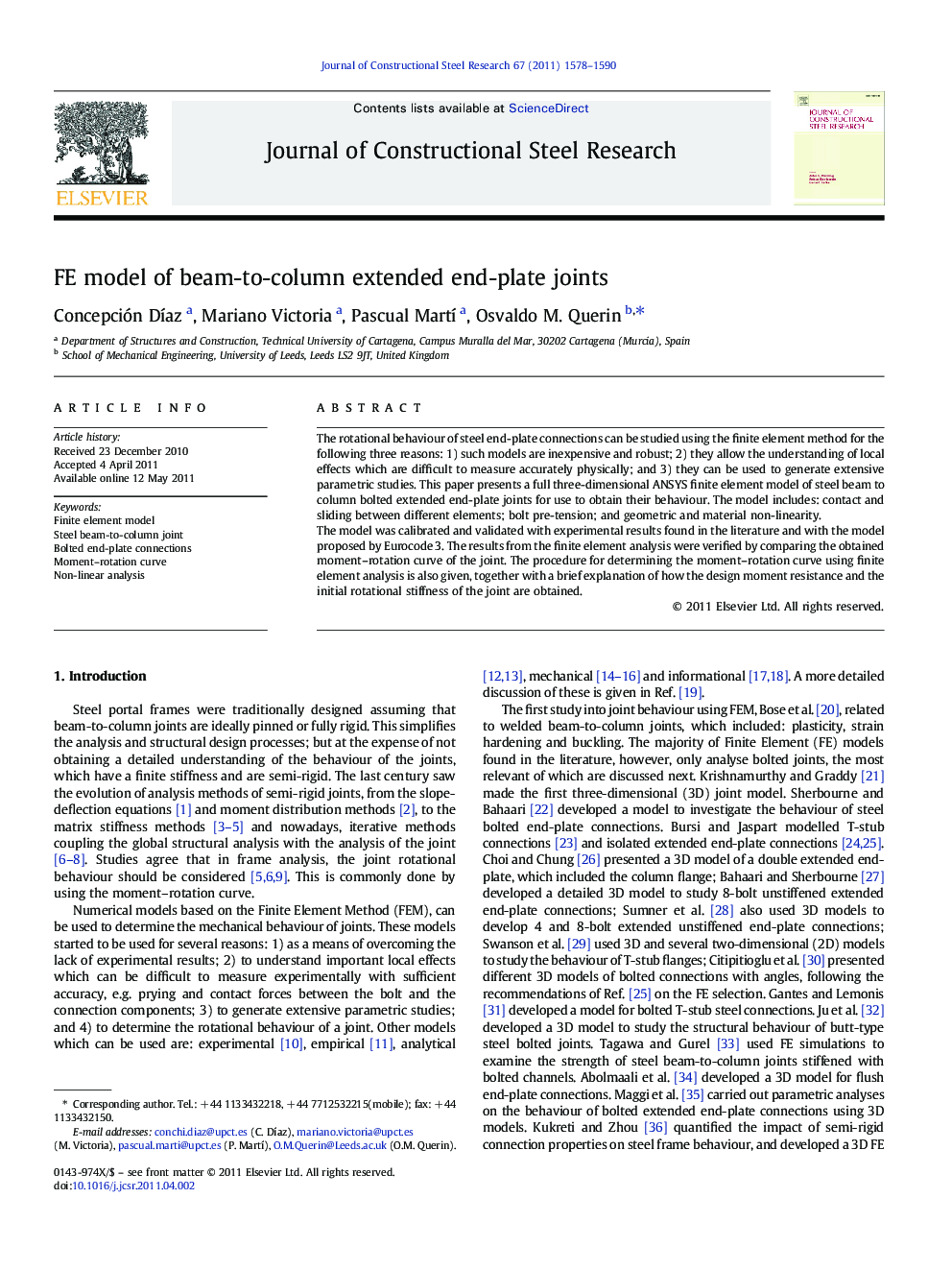| Article ID | Journal | Published Year | Pages | File Type |
|---|---|---|---|---|
| 285470 | Journal of Constructional Steel Research | 2011 | 13 Pages |
The rotational behaviour of steel end-plate connections can be studied using the finite element method for the following three reasons: 1) such models are inexpensive and robust; 2) they allow the understanding of local effects which are difficult to measure accurately physically; and 3) they can be used to generate extensive parametric studies. This paper presents a full three-dimensional ANSYS finite element model of steel beam to column bolted extended end-plate joints for use to obtain their behaviour. The model includes: contact and sliding between different elements; bolt pre-tension; and geometric and material non-linearity.The model was calibrated and validated with experimental results found in the literature and with the model proposed by Eurocode 3. The results from the finite element analysis were verified by comparing the obtained moment–rotation curve of the joint. The procedure for determining the moment–rotation curve using finite element analysis is also given, together with a brief explanation of how the design moment resistance and the initial rotational stiffness of the joint are obtained.
Research highlights►Provide 3D ANSYS FE model of steel beam-to-column bolted extended end-plate joints. ►Including: contact, sliding; bolt pre-tension; geometric and material nonlinearity. ►FE model verified with experimental results from literature and Eurocode 3 model.
